I live on the Mystic River (http://en.wikipedia.org/wiki/Mystic_River); a largely urban (Boston) river that has been heavily used (and abused) for over 300 years. Parts are quite verdant and scenic, but most people know the river from its heavily-industrialized mouth, which is anything but scenic.
The Mystic, like most of Boston's watersheds, was heavily polluted coming into the 1960s. (That's when the Standells recorded their hit, “Dirty Water.”)
Huge infrastructure improvements cleaned up Boston Harbor proper --- it's now one of the cleanest major harbors in the US. But many of the rivers --- including the Mystic --- haven't had that kind of intensive investment, and so still have poor water quality.
One measure of the water quality is the fish population. Herring (and their cousins, alewives) are a foundation food for the local aquatic ecosystem, including marine mammals, birds, and larger fish like tuna and striped bass.
Pollution and overfishing took their toll. Check out this graph of commercial herring catches; By 2007, the catch had almost dropped to zero!
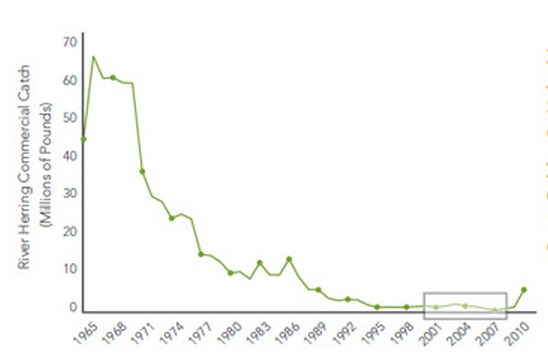
Better water quality, infrastructure improvements (such as fish ladders, to get fish past dams to their spawning grounds), and more stringent fishing regulations have allowed the herring to make a bit of a comeback.
I don't care much about herring per se, but they are a bellwether species --- not a canary in a coal mine, but a fish in a watershed --- that helps to indicate the health (or lack thereof) of the local environment.
So, this year, I signed up to be an official herring counter; one of many volunteers who stand statistically-defined watches at fish ladders up and down the coast, and count how many herring pass by.
The counts start in early April; the initial counts are usually zero because they're before the herring run begins. The counts continue as the run starts and progresses, and continue until the counts reach zero (or nearly so) when the run ends.
Counters are assigned one hour blocks throughout the daylight hours; you're supposed to pick a random 10-minute interval within your hour-long block, and keep track of how many herring pass upstream through the fish ladder.
I'm participating through the Mystic River Watershed Association (MRWA; http://mysticriver.org/), whose annual herring counts are part of the Herring Alliance (http://herringalliance.org/).
The Mystic River's fish ladder is located between the Upper and Lower Mystic Lakes (https://www.google.com/maps/@42.4306497,-71.1485615,14z)
Here's a map view; X marks the spot of the dam and fish ladder:
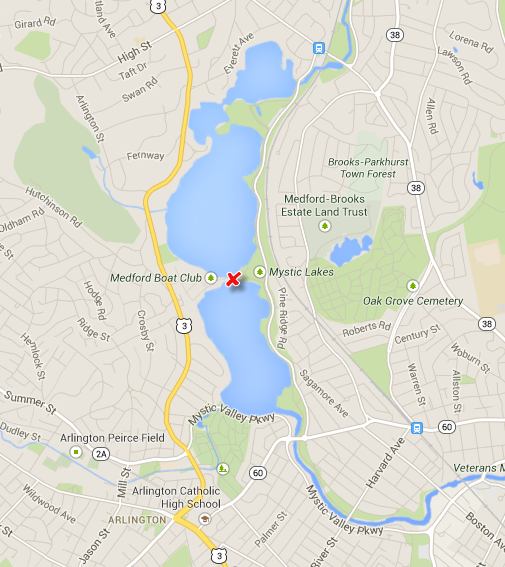
Here's a zoomed in aerial view, showing the relevant structures.
This year's cold winter delayed the start of the count: The ladder was iced-in until this past week. But now the counts have begun, and I drew my first shift yesterday.
It was chilly and breezy; a front was moving in, and half the sky was cloudy. Here's a view from the dam, looking south, over Lower Mystic Lake. (It's a 180 degree panorama, so the dam looks curved in the foreground; of course, in real life, it's not.)

Here's the view looking north, over Upper Mystic Lake. You can see the half-and-half sky.

You have to get keys from a combination lockbox, and then unlock a series of gates designed to keep people away from the spillways and fish ladders. (Volunteer fish counters have to attest that they know how to swim; there's no one stationed at the dam.)
This plaque marks the spot.
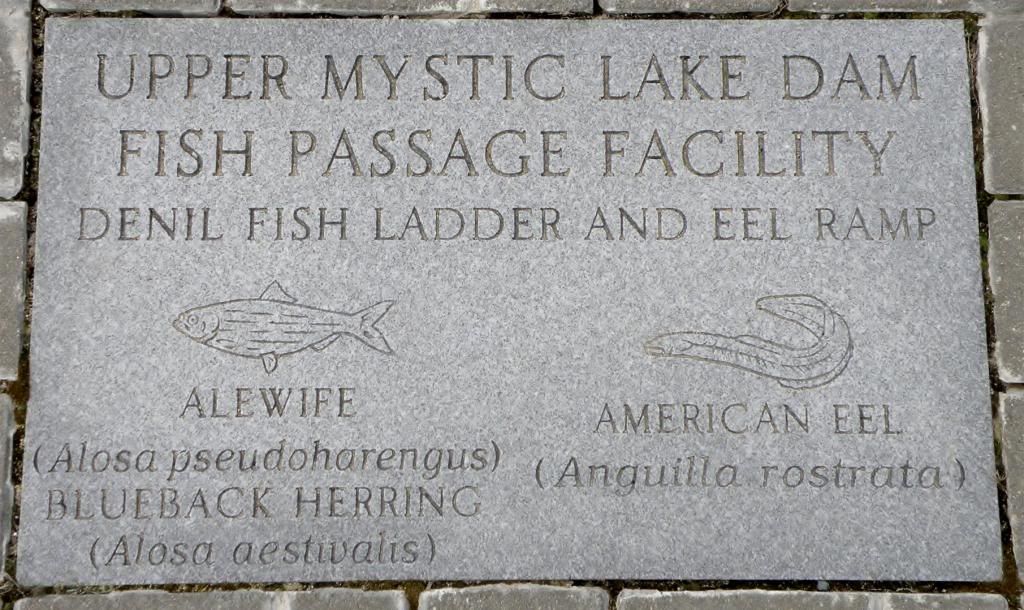
The fish ladder is covered by open grating. Here's a view, looking down, with my toes for scale.
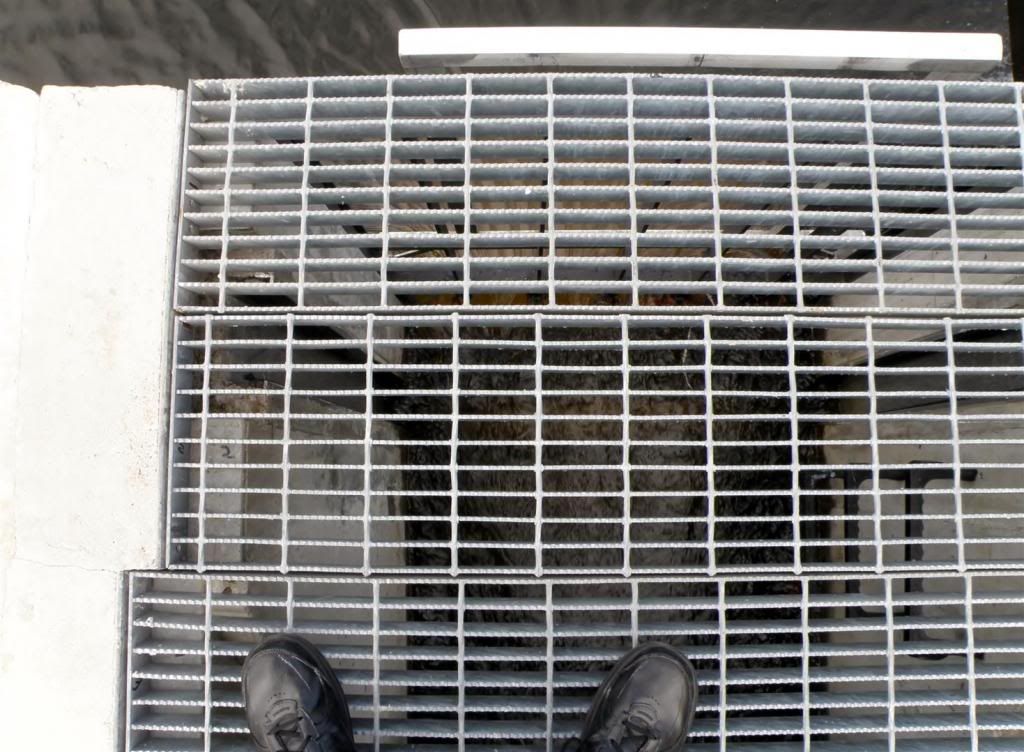
A closer view: The water is entering from the top. If you look closely, you can see a lighter-colored area at the top of the ladder. That's where you're supposed to look to see the fish passing by (otherwise, dark fish in a dark streambed would be basically invisible). But it's not a whole lot clearer in real-life than in this photo: The ladder is designed for fish, not for easy-counting by humans.
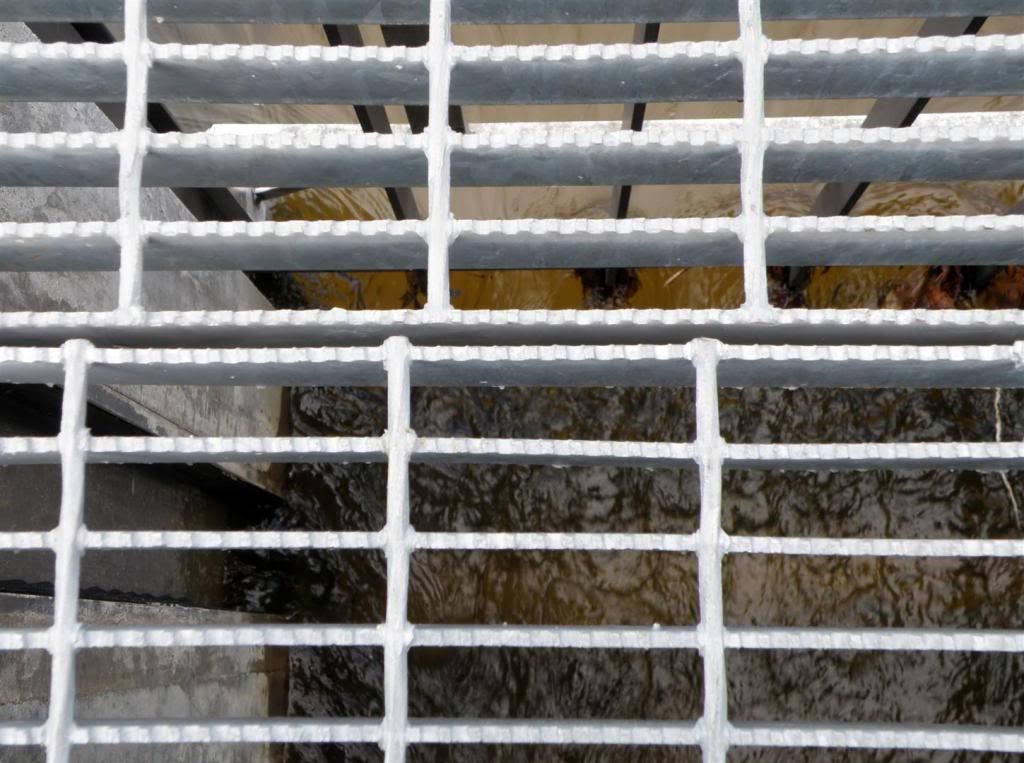
The MRWA provides counting tools in a nearby metal box: polarized glasses (to see better into the water), counting slips and clipboard, manually tally device, and a stopwatch for timing the 10-minute counting window.
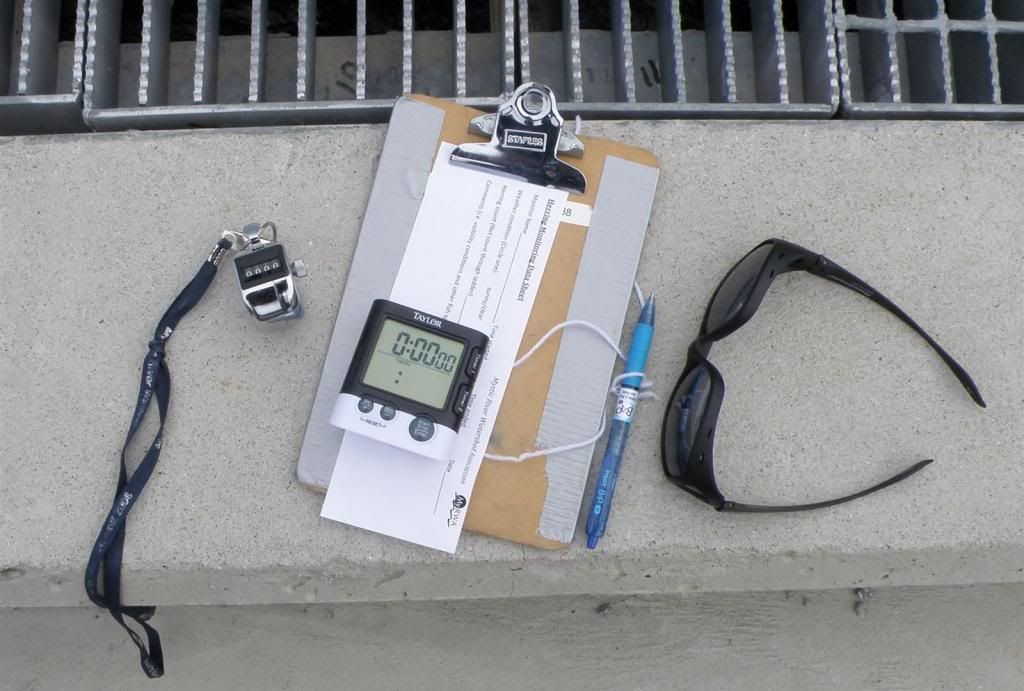
They also provide a flotation cushion, although it's more for comfort when you're lying on the metal grid, than for water rescue.
At the appointed hour, I put on the glasses and lay face down and motionless for 10 minutes on the grid atop the fish ladder.
(I'm a little surprised someone didn't call 911 to report a dead geezer on the dam. But perhaps they're used to seeing fish counters.)
I used my phone to audibly signal the start and end of the 10-minute window, so I wouldn't have to look away from the ladder to see the stopwatch.
Everything went well --- except there were no fish at all. Zero. Nada. Zip. Zilch.
When I filled out my reporting sheet, I saw that the watchers before me also had zero counts, so I assume that means the run hasn't started yet --- not that there are no herring anymore.
I'm scheduled for another count next week. I hope I'll see a little ichthyoid action then!

No comments:
Post a Comment